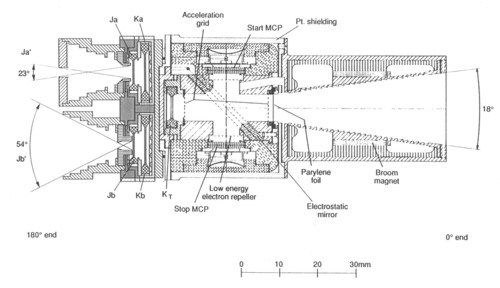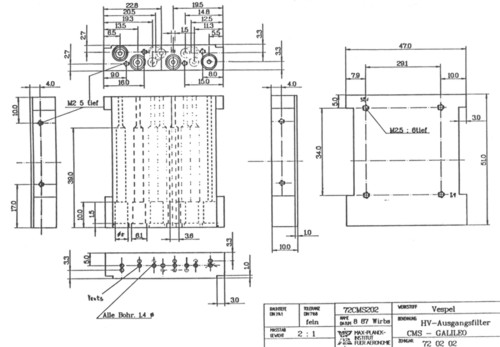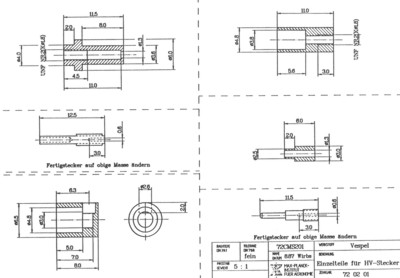The Galileo Energetic Particles Detector
Galileo EPD Handbook
Chapter 1. Instrument Summary
CMS Subsystem
This section on the CMS subsystem is organized as follows:
- Overview of CMS subsystem as flown (i.e., post-Challenger) - below; please scroll down
- Post-Challenger Revisions
- Pre-Challenger CMS Overview (for reference)
- Analog Electronics (post-Challenger and pre-Challenger)
- Calibrations
CMS Subsystem - Post-Challenger (as flown)
Source: The Galileo Energetic Particles Detector, D. J. Williams et al., Space Science Reviews, 60, 385, 1992 (excerpts).
The CMS is designed to measure the composition of ions in the Jovian environment from energies of ≥10 keV nucl-1 to ≥10 MeV nucl-1. This system contains two types of energetic particle telescopes, shown schematically in Figure 1-11. A small time-of-flight (TOF) telescope looks in the 0° direction while a pair of DE x E solid state detector telescopes (JK detectors) covering higher energies are oriented in the 180° direction.
The TOF portion of CMS is a replacement of the original EPD TOF telescope built for launch in early 1986. JPL, NASA, and the Bundesministerium fur Forschung und Technologie allowed us the opportunity to take advantage of new technology in order to lower our energy threshold for composition measurements by at least a factor of ten....The new TOF telescope, its high voltage power supply, the new TOF circuitry, and the major modifications to the electronics subsystem were designed, built, tested, and integrated into the EPD in 1987 and 1988. All instrument and spacecraft tests and calibrations were successful and were indicative of an instrument response that exceeded expectations.
CMS Channel Descriptions: Table 6
Figure 1-12a. Detail of EPD CMS detector head (as flown).
Figure 1-12b. Schematic cross-section of TOF system. Source: Critical Design Review, Dec. 1987.
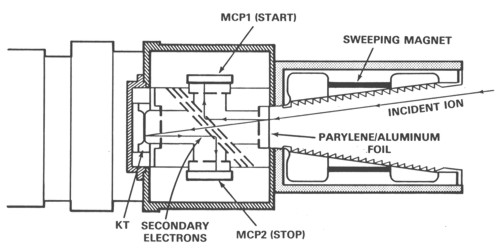
Figure 1-12c. Detailed cross-section of TOF system. Source: Critical Design Review, Dec. 1987.
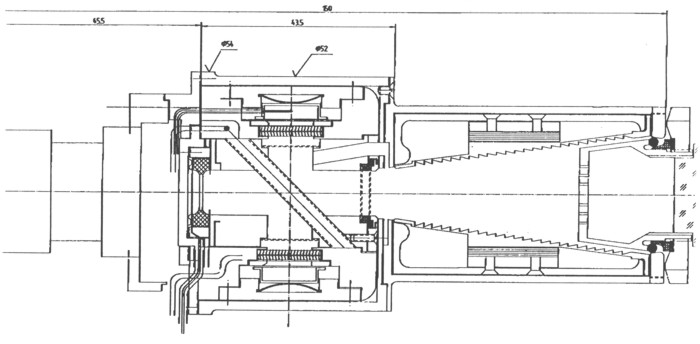
High Voltage Output Filter
Source: Critical Design Review, December 1987, MPAe
| Part No. | Function | Type-Value | Factory |
| R50 | μ film resistor | RNR55 100k | Da6 |
| R51 | μ film resistor | RNR55 3k | Da6 |
| R52 | μ film resistor | 102 Ω RNR55 | Da6 |
| R53 | μ film resistor | 1.2k RNR55 | Da6 |
| R54 | μ film resistor | 1.5k RNR55 | Da6 |
| R55 | μ film resistor | 102 Ω RNR55 | Da6 |
| R56 | μ film resistor | " | Da6 |
| R57 | μ film resistor | " | Da6 |
| R58 | μ film resistor | " | Da6 |
| R59 | μ film resistor | " | Da6 |
| R60 | μ film resistor | " | Da6 |
| R61 | μ film resistor | " | Da6 |
| R62 | μ film resistor | " | Da6 |
| R63 | μ film resistor | " | Da6 |
| R64 | μ film resistor | " | Da6 |
| R65 | μ film resistor | " | Da6 |
| R66 | μ film resistor | " | Da6 |
| R67 | μ film resistor |
100 Ω RNR55 |
Da6 |
High Voltage Output Filter - schematic and details:
Next: Post-Challenger Revisions: Hardware Changes
Return to Galileo EPD Handbook Table of Contents Page.
Return to main
Galileo Table of Contents Page.
Return to Fundamental
Technologies Home Page.
Updated 8/23/19, Cameron Crane
QUICK FACTS
Mission Duration: Galileo was planned to have a mission duration of around 8 years, but was kept in operation for 13 years, 11 months, and 3 days, until it was destroyed in a controlled impact with Jupiter on September 21, 2003.
Destination: Galileo's destination was Jupiter and its moons, which it orbitted for 7 years, 9 months, and 13 days.




